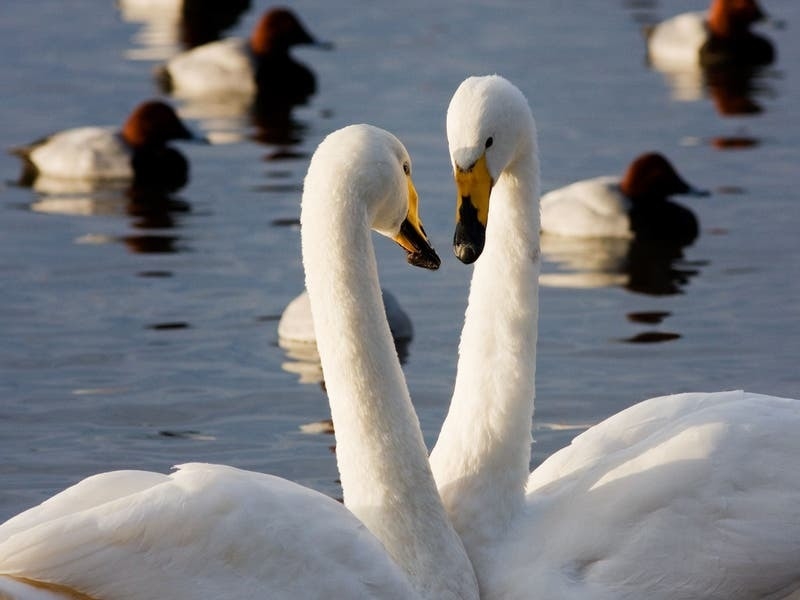Populations of whooper swans have grown 30 times faster inside nature reserves than outside over the past three decades, research has shown.
Scientists from the University of Exeter analysed observations of more than 10,000 whooper swans at 22 sites across the UK – three of which are managed as nature reserves by the Wildfowl and Wetlands Trust (WWT).
They said survival rates were significantly higher at nature reserves, with many swans moving to non-protected sites because the population growth was so strong.
Based on their findings, published in the journal Proceedings Of The National Academy Of Sciences, the researchers said the protective effects of nature reserves could see the wintering whooper swan population double by 2030.
Study author Dr Andrea Soriano-Redondo, from the universities of Exeter and Helsinki, said: “Protected areas are the main tool being used to stem declines in biodiversity, and there is a growing consensus that 30% of the planet’s surface should be protected by 2030.
“Our findings provide strong evidence that nature reserves are hugely beneficial for whooper swans, and could dramatically increase their numbers in the UK.”
Whooper swans are usually winter visitors to the UK from Iceland, where they spend summers.
These swans have long thin necks, black legs and black bills with large triangular yellow patches.
Whooper swans look similar to another swan species known as Bewick’s swans but are bigger in size with larger beak markings.
Using data spanning 30 years, the researchers found the annual population growth rate of whooper swans inside nature reserves was 6%, compared to 0.2% outside reserves.
Measures in place to help wintering swans at the WWT reserves included fox fences, supplementary food, managed roosting sites and hunting bans.

“Young swans were most likely to do this, meaning the benefits of nature reserves spill over to other areas too.”
The researchers said even if protected nature reserves are relatively small and used only for a part of species’ life cycles, they can have major effects on populations of migratory birds that inhabit them.
David Pickett, centre & reserve manager at WWT Caerlaverock Wetland Centre, near Dumfries in Scotland, said: “This research shows how safe havens for wetland wildlife, like those at WWT Caerlaverock, Welney and Martin Mere, can help a species survive and succeed when their traditional homes are under threat.
“Many wild birds rely on our sites for food and shelter and we are committed to creating and restoring more of these healthy wetland habitats, which the UK has lost so many of in our recent history.”






